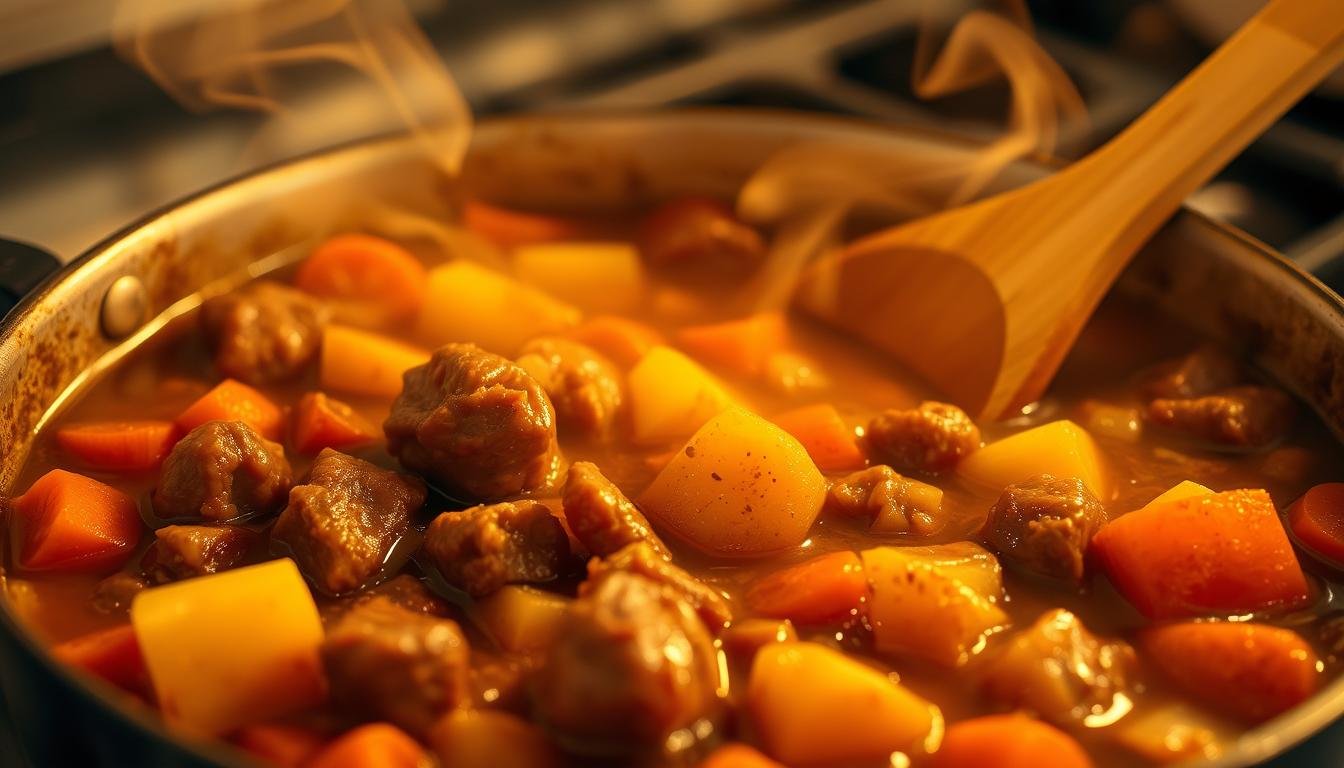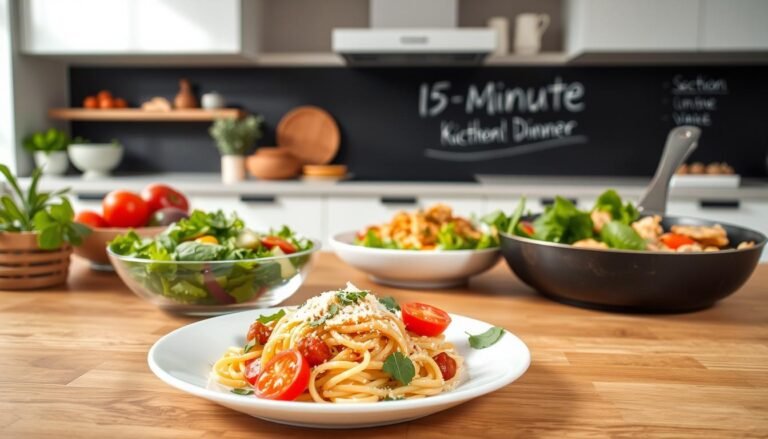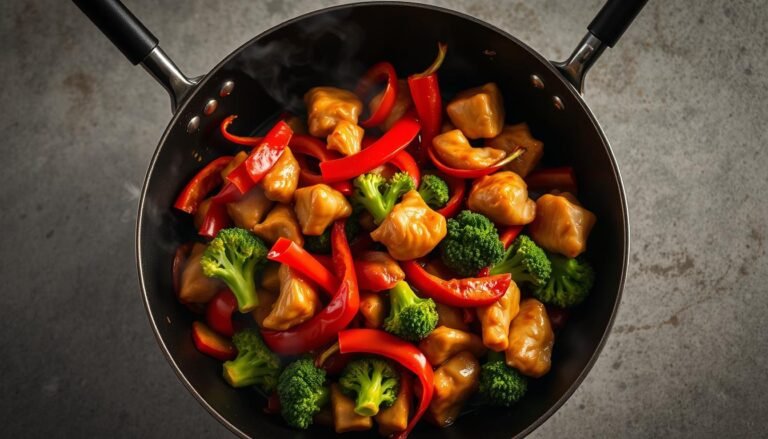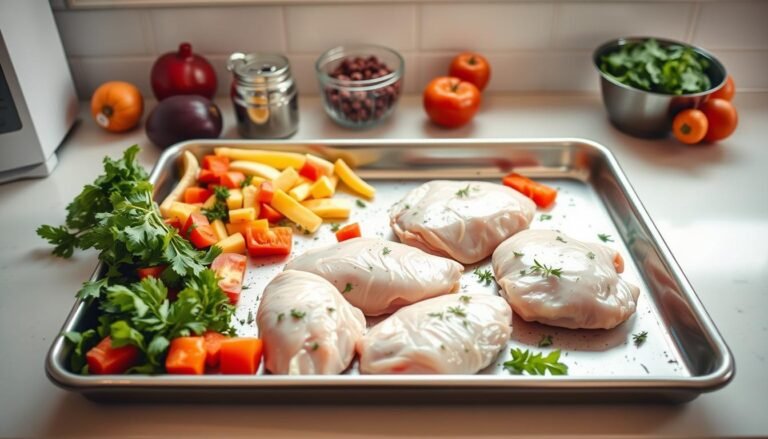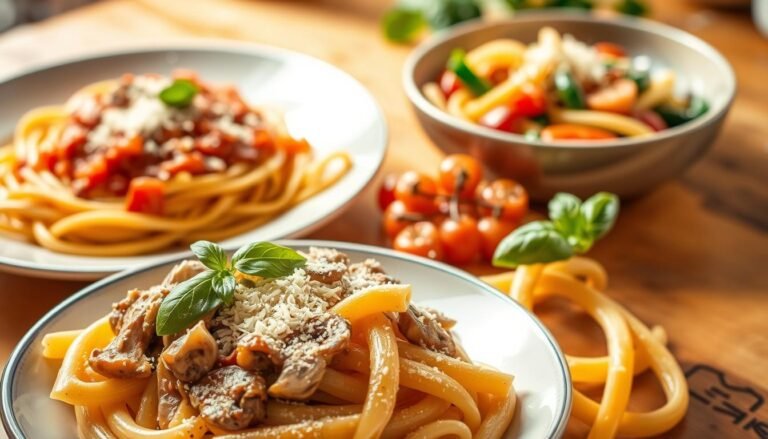Beef Stew Recipe for Stove Top
Are you looking for a warm, satisfying meal to make your evening special? Look no further than our ultimate beef stew recipe for stove top cooking. It’s a classic comfort food that brings rich flavors and tender meat right to your table.
Imagine making a restaurant-quality beef stew in your own kitchen. With just a few simple ingredients and easy steps, you can create a meal that warms your heart and soul. This recipe is perfect for both beginners and experienced cooks, making it a favorite for family dinners.
Key Takeaways
- Master the art of creating a delicious beef stew at home
- Learn professional cooking techniques for perfect texture
- Discover how to build deep, rich flavors
- Understand the secrets of tender meat preparation
- Create a versatile comfort food suitable for any occasion
Quick Recomendation: Our blog is full of useful information to inspire you. If you are seeking a healthy way to prepare your meals, we recommend this Keto product
Essential Ingredients for a Perfect Beef Stew
Making a tasty beef stew begins with picking the right ingredients. The best meat for stew is chuck roast. It has lots of marbling that gets tender and flavorful when slow-cooked.
Stew vegetables are key for depth and nutrition. Carrots, potatoes, and onions are classics. Carrots sweeten the stew, potatoes add texture, and onions give a savory base.
Herbs and spices make your stew stand out. Thyme adds earthiness, bay leaves add complexity, and paprika brings warmth. Salt and black pepper are must-haves to enhance flavors.
Experts say to cut beef and veggies the same size. This ensures they cook evenly. With these ingredients, your beef stew will wow everyone.
Kitchen Tools and Equipment Needed
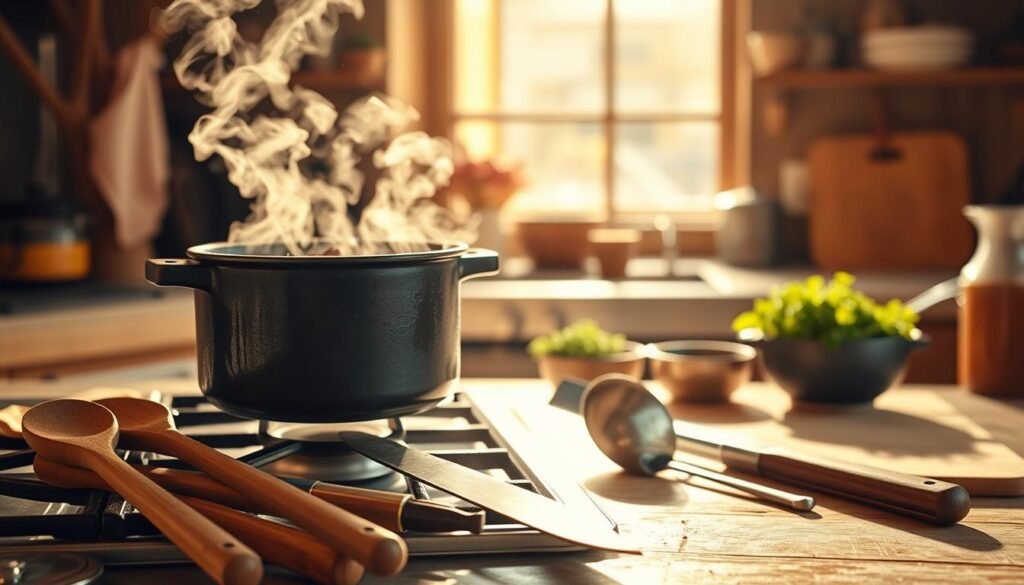
Starting a perfect beef stew requires the right cooking gear. Your stew pot is key. Choose a heavy-bottomed Dutch oven or large cast-iron pot for even heat and rich flavors.
For stew prep, get a few important tools. A sharp chef’s knife makes chopping easier and more accurate. Wooden spoons are great for stirring without scratching your pot. A meat thermometer ensures your beef is tender and delicious.
Other useful items include a sturdy cutting board, measuring cups, and a ladle. An immersion blender can also make your stew smoother. Quality tools greatly improve your cooking and dish quality.
Don’t overlook practical accessories like kitchen tongs and a reliable colander. With these, you’ll be ready to make a tasty beef stew that will wow everyone.
Preparing Your Ingredients Like a Pro
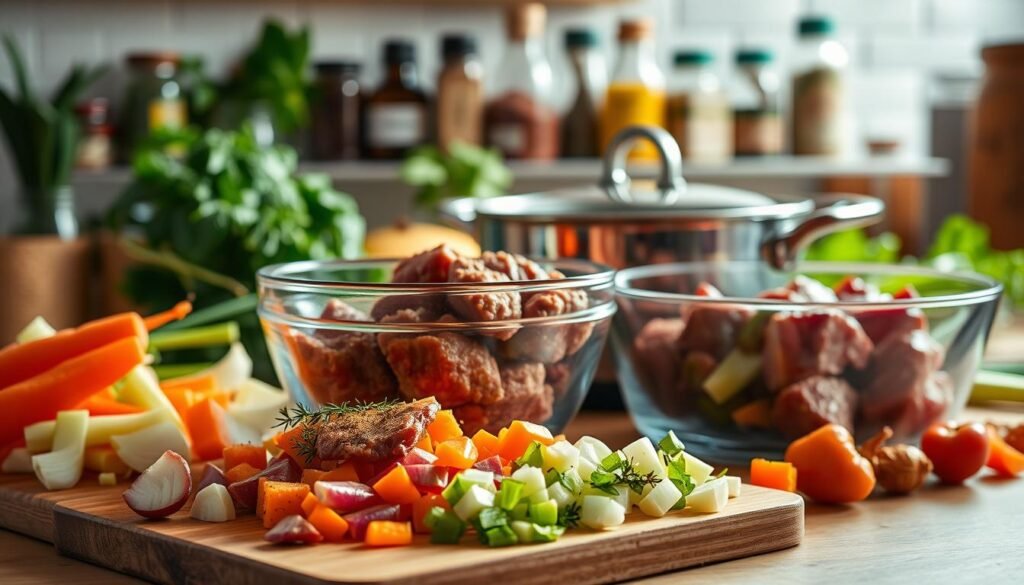
Choosing the right cut of meat is the first step in professional beef preparation. Opt for chuck roast or beef stew meat with good marbling. Trim excess fat carefully, leaving some for flavor.
Make sure to cut your beef into uniform 1-inch cubes. This ensures even cooking and tender results.
When cutting vegetables for stew, consistency is key. Chop onions, carrots, and potatoes into similar-sized pieces around 3/4 inch thick. This helps them cook evenly and creates a balanced texture in your final dish.
Wash and peel vegetables thoroughly before cutting. This removes any dirt or debris.
Seasoning measurements are critical for a delicious stew. Use a kitchen scale or measuring spoons to ensure accuracy. Start with classic seasonings like salt, black pepper, and dried thyme.
Typically, you’ll want about 1 teaspoon of salt and 1/2 teaspoon of pepper per pound of beef. Adjust seasonings to match your taste preferences.
Pro tip: Prepare all ingredients before you start cooking. This mise en place technique helps you stay organized and makes the cooking process smoother. Sharp knives and a clean cutting board will make your ingredient preparation faster and more enjoyable.
Beef Stew Recipe for Stove Top
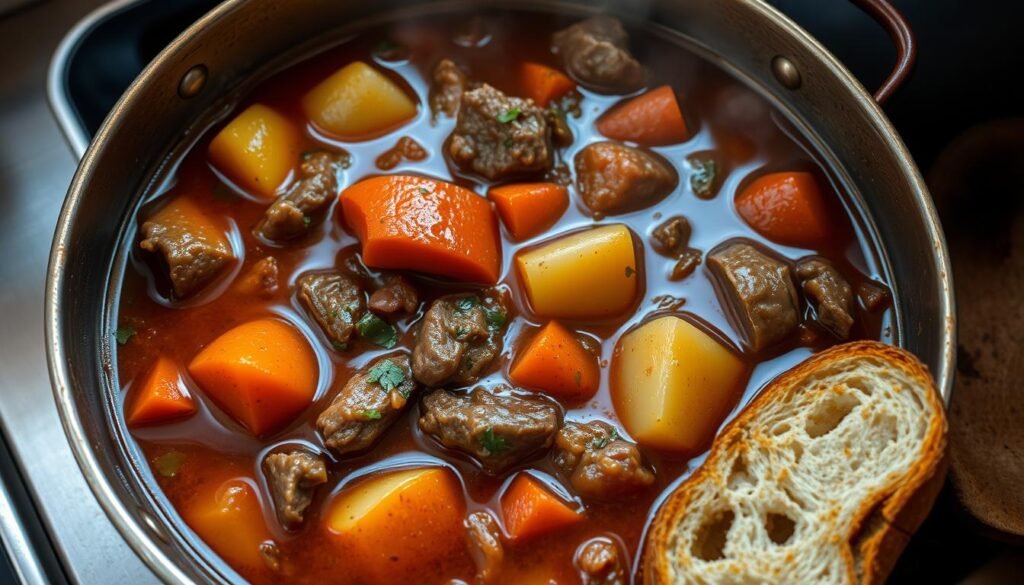
Making the perfect beef stew on your stove top needs patience and care. Choose a high-quality beef chuck roast. It will become very tender while cooking. Cut the meat into 1-inch cubes for even cooking times.
Start by seasoning the beef with salt and pepper. Heat a large Dutch oven and add olive oil. Brown the meat in batches to get a rich, caramelized exterior. This step is key for deep, complex flavors in your stew.
After browning the meat, sauté onions and garlic in the same pot. Add the beef back in, along with beef broth, tomato paste, and herbs like thyme and bay leaves. Lower the heat and simmer slowly. This lets the stew develop its rich flavors. Cooking times for stew are usually 2-3 hours, depending on the meat’s tenderness.
In the last 30 minutes, add root vegetables like carrots and potatoes. This prevents them from getting mushy while cooking perfectly. Taste and adjust the seasoning as needed. This creates a hearty meal that will warm your soul on any day.
Mastering the Art of Browning Meat
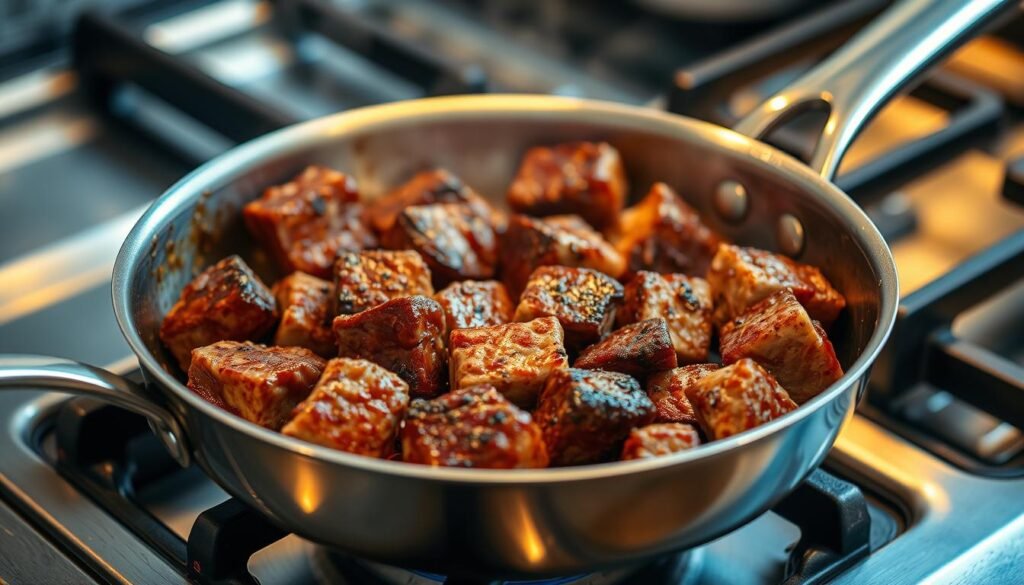
Unlocking the secret to a delicious beef stew starts with perfecting your beef browning techniques. The Maillard reaction is your key to transforming simple meat cubes into a flavor-packed culinary experience. When you brown meat for stew, you’re doing more than just changing its color – you’re creating complex flavor profiles that make your dish truly memorable.
Start by patting your beef dry with paper towels. Moisture is the enemy of proper browning. Choose a heavy-bottomed pan that can handle high heat without scorching. Cast iron works best for achieving that perfect golden-brown crust. Heat your pan until it’s smoking hot, then add a small amount of oil with a high smoke point.
Work in small batches when browning meat for stew. Overcrowding the pan prevents the Maillard reaction from happening effectively. Each piece of meat needs space to develop a deep, rich crust. Don’t rush the process – let each side sear for 2-3 minutes without constant stirring. This allows the natural sugars and proteins to caramelize and create those incredible flavor compounds.
Pro tip: Use tongs to turn your meat, ensuring an even brown on all sides. The goal is a deep mahogany color that seals in juices and creates a flavor foundation for your entire stew. Remember, patience is your greatest tool in mastering beef browning techniques.
Creating Rich and Flavorful Broth
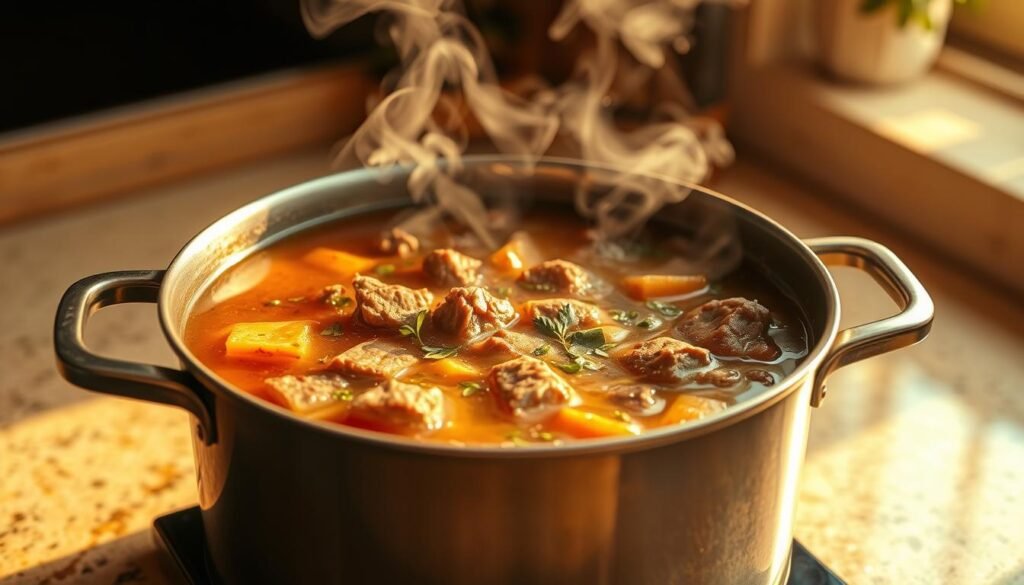
Making a tasty stew broth is like creating a work of art. It turns simple ingredients into a dish that’s truly special. Begin with a top-notch beef broth as your base. This will give your stew a solid flavor.
Using deglazing techniques is key to boosting your stew’s taste. After browning the meat, add a bit of red wine or broth to the pan. This step pulls out the caramelized bits, adding a deep flavor to your stew.
Aromatics are your best friends when it comes to flavor. Onions, garlic, and celery are essential. Sauté them until they’re soft and smell amazing. This releases their natural sweetness, adding a rich taste to your stew.
Simmering slowly is important. It lets the flavors blend together, making your broth incredibly delicious. Being patient is essential for creating a stew that’s a true comfort food classic.
Tips for Perfect Stew Consistency
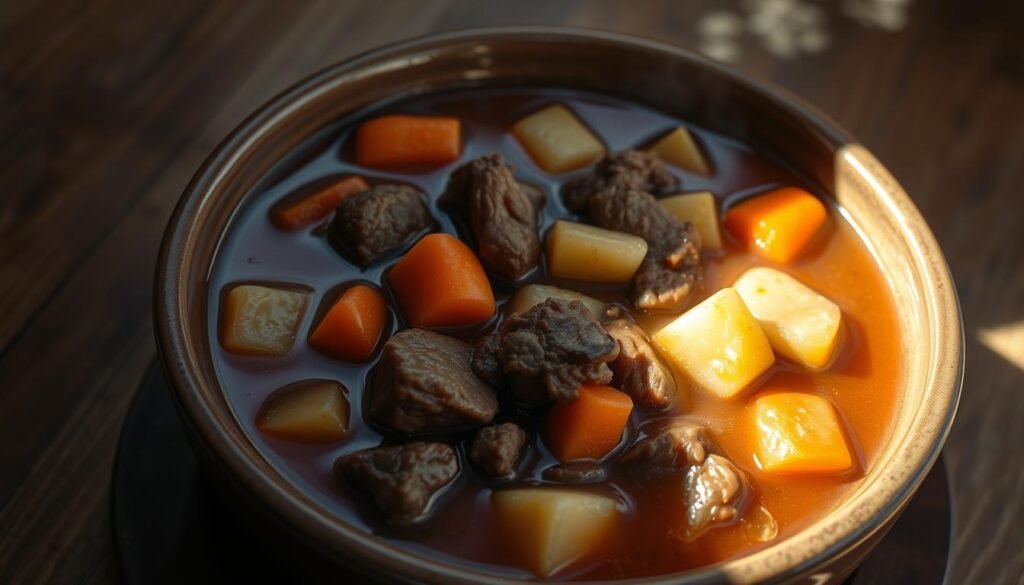
Getting the right stew thickness is an art. It can make your beef stew go from good to amazing. The meat-to-vegetable ratio is key to how thick and satisfying your stew will be.
To adjust the stew’s consistency, try a few simple tricks. If it’s too thin, coat your meat in flour before browning. This creates a natural thickener as it cooks. You can also mix cornstarch or potato starch with cold water and stir it in during the last stages of cooking.
For a richer texture, reduce the liquid by simmering the stew uncovered for 15-20 minutes. This method concentrates flavors and thickens the stew naturally. Keep an eye on your meat-to-vegetable ratio. Too many veggies can make it watery, while the right mix makes it perfect.
Pro tip: Use a wooden spoon to check your stew’s thickness. If you can draw a line and it holds for a moment, it’s just right. A great stew should coat your spoon without being too runny or thick.
Storage and Reheating Guidelines
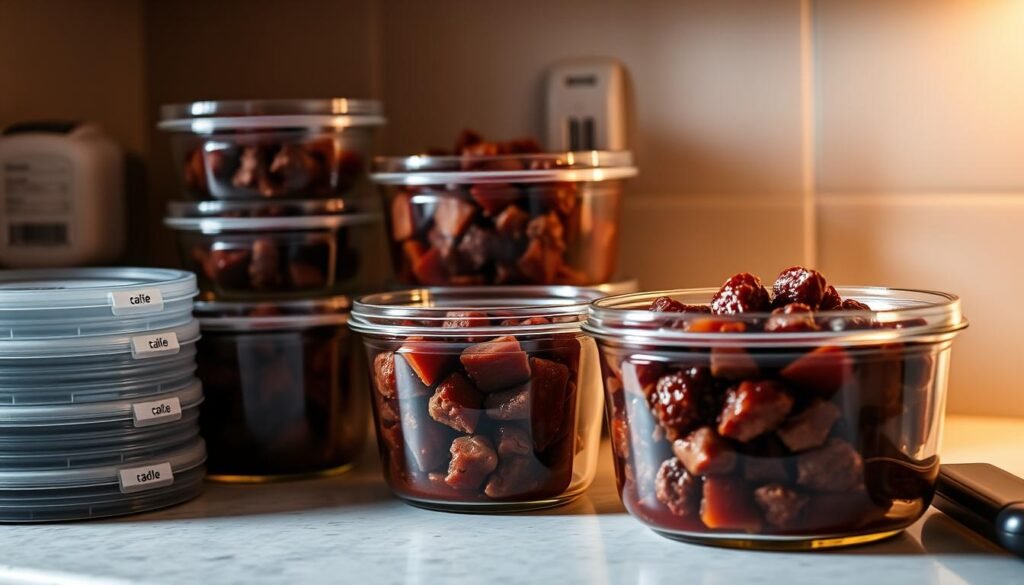
Proper storage and reheating of beef stew can keep its flavor fresh and food safe. Cool the stew down quickly before putting it in the fridge. Divide it into smaller parts to cool faster and make reheating simpler.
Store the stew in airtight containers in the fridge for 3-4 days. For freezing, use containers or bags made for the freezer. Remember to leave space at the top for expansion. This way, your stew can stay good for 4-6 months in the freezer.
Reheating stew needs careful attention to keep its flavor and texture. Warm refrigerated stew slowly on the stovetop over medium-low heat. Stir often to avoid sticking and ensure even heating. If it’s frozen, thaw it in the fridge overnight before reheating.
Always check the stew’s internal temperature reaches 165°F to be sure it’s safe. Try to avoid microwaving, as it can ruin the texture and cause uneven heating. A slow, gentle reheat on the stovetop will make your stew taste as good as when you first made it.
Conclusion
Now you know how to make a classic beef stew that will wow your loved ones. The tips in this guide will help you turn simple ingredients into a rich, hearty dish.
Remember, every beef stew recipe is just a starting point. You can make it your own by trying new herbs, veggies, and meats. Add your own special touches to make it truly yours.
Getting better at making stew takes practice. Each time you make it, you’ll get more confident and learn how flavors work together. Your kitchen will become a cozy place filled with delicious smells that warm everyone’s heart.
Keep exploring new recipes and techniques as you cook. Making the perfect beef stew is a fun journey of learning and tasty finds.
Quick Recomendation: Our blog is full of useful information to inspire you. If you are seeking a healthy way to prepare your meals, we recommend this Keto product
